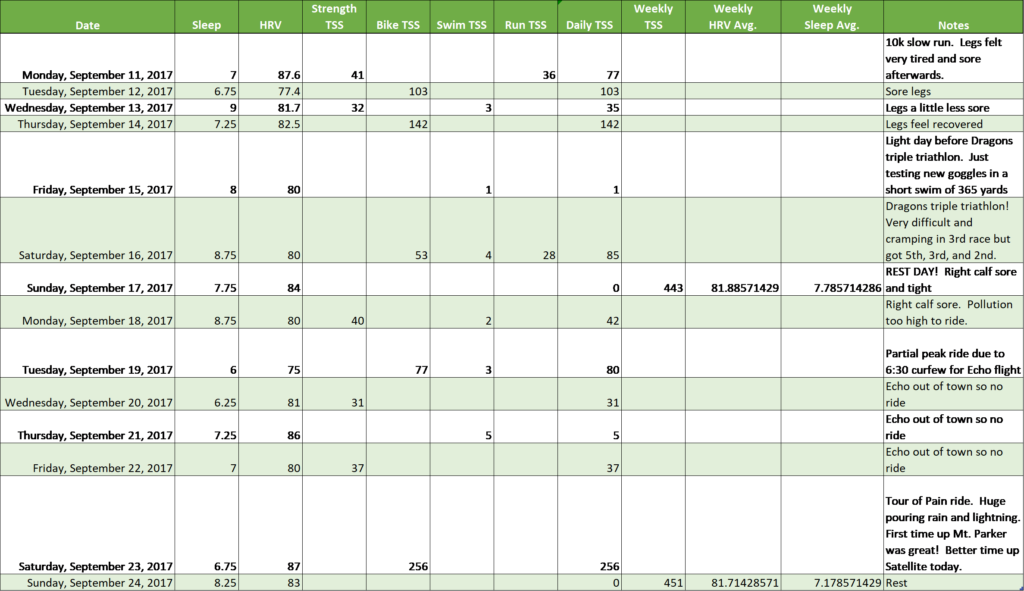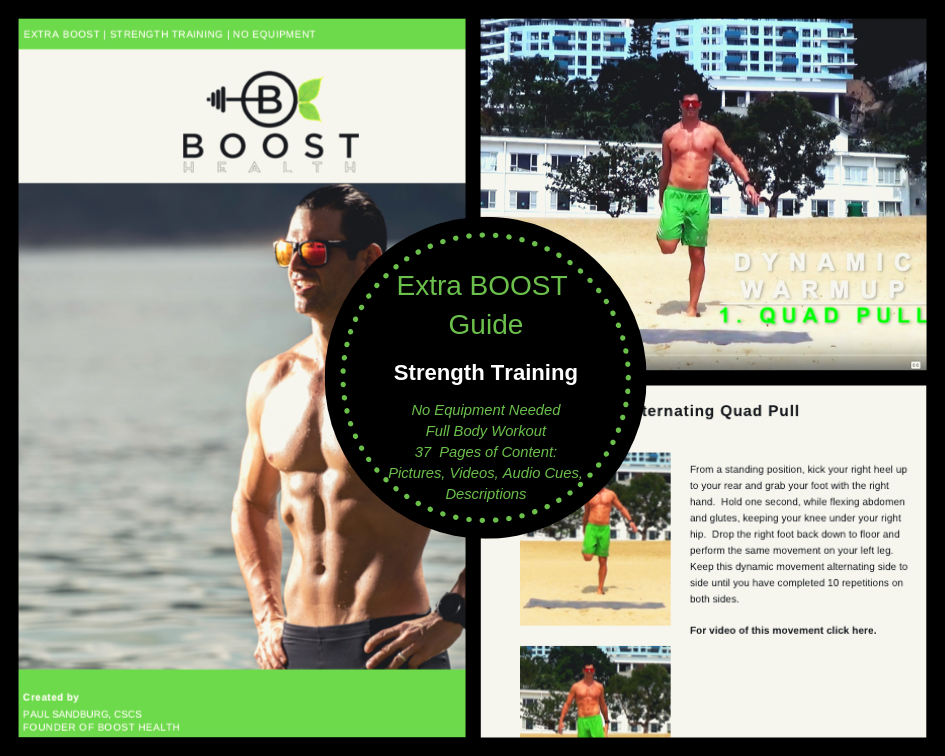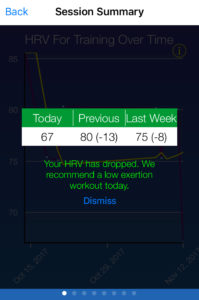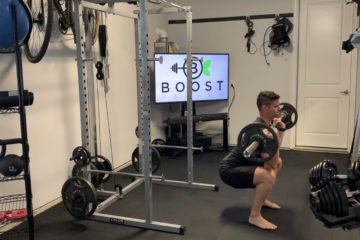
I Did Not Hear You
Sometimes I don’t listen to my body. Sometimes I push through pain that I shouldn’t push through to get that last rep done in the weight room or finish that last mile on a run. Sometimes I finish a big workout and don’t save time for cool down and stretching and consequently have a tight back, calves, shoulders, hamstrings, glutes, and everywhere else too. Sometimes I wake up at 4:15am for a workout and feel like I need more sleep, but I get up anyway and go get it done. Ok well, every time I wake up that early, I feel like I need more sleep. But seriously, there are probably times, such as after only 5 hours of sleep, where I should consider sleep instead of pounding pavement or pumping iron.
Does this sound familiar to anyone? I have come across numerous Type A personalities, like myself, that get addicted to working out, and the schedule of the day. My morning routine is mapped out to the minute any deviation causes me stress. Just ask my wife and kids! Luckily there are tools available to us now, in this high tech era we exist in, that can help us quantify if we are rested and ready for action, or need to take it easy. Now the art is in actually paying attention to these data and resting or taking the intensity down if necessary. I will cover those tools shortly but first I need to share a story.
Learning From Mistakes
I was on a business trip a few years ago. It involved long day of travel across the country and the destination was Florida. It was summer time and I was really excited to get checked into the hotel and then go out for an early evening jog and maybe catch the sunset over the water. After checking in I went down to the gym for a quick warm up before the run. I was feeling tight in my hips and hamstrings after traveling all day. I usually work from a standing workstation so being forced to sit in cars, buses, planes, and trains all day long is brutal for me. Recognizing the tightness I did some foam rolling and smashing on those areas (I gave up foam rolling and smashing about 1 year ago and feel improvement, and will cover that in an upcoming episode). I then did my usual dynamic warmup of leg swings, burpees, heels to butt, jumping jacks, etc. You can see my dynamic warm up here. Sounds like pretty good prep for a run right?
I then started out on an easy, zone 2, 4 mile jog. I figured I would head out towards the coast for 2 miles, and then head back to the hotel, to get 4 miles in. Nothing major. With an easy jog in mind, I headed out toward the sunset. About 1 mile in I started to notice tightness in my hamstring. This wasn’t the crampy, lockup feeling. This was the annoying, pinchy pressure, steady, every step a little worse, tightness. Those of you who have had this, know what I am talking about. I knew it wasn’t feeling “right” but I also knew I still had 3 miles to go, I had been trapped in a seated position while traveling all day, I had beautiful weather, a sunset, a voice in my head saying it is “nothing”, but most dangerous of all, I had the will to push through the pain. Now don’t get me wrong, pushing through pain and discomfort is what all humans must do to force the body to adapt and improve. Knowing what the difference is between pain from a high level of exertion, and pain from an injury is the key. And I knew better. So why did I keep going? I am afraid I don’t have a good answer. I hobbled through the rest of the run and had a very sore, and strained, hamstring for several days. Wondering what caused an injury can make you go crazy. Questions and self-doubt popped into my head such as – Am I not training my hamstrings enough? Are there more dynamic hamstring exercises I could have been doing that would have prevented this? Should I have warmed up more since I was feeling tight? Did I foam roll or smash too much before the run? Should I have bagged the run when I noticed I was tight after traveling?
The acute pain faded a few days later and I picked up the training like nothing had happened. The hamstring was still barking quite a bit during strenuous activity though, especially on runs. I did my best to ignore it and hoped it will magically heal soon with a heavy dosage of foam rolling, smashing, and strength training. After no magic happened, I went and saw a physical therapist in November, 4 months after the injury occurred. It seemed like the therapist did a fantastic job with the body work and I think there is something to having a professional do proper body work techniques versus trying to body work with a roller on your own. Massage therapy has been shown to improve pain but there is conflicting evidence and it seems that the therapy would need to be continuous.
There clearly needs to be much more research done on this topic before anything definitive can be said. The therapist also had me do general strengthening movements such as plyometric box jumps, squat variations, ball bridges, etc. He would ask if the movements bothered my injury, and I said that I could feel it, but I also was able to perform quite well in the exercises. Granted, I already did similar strength training 3 times per week, so perhaps my existing strength and experience covered up what a therapist would normally see in a session as a warning sign. The therapist continued to push me and I continued to perform. The hamstring stayed about the same though. Based on my performance and a few range of motion tests, after 2 weeks of therapy I was released back “into the wild” to continue training.
I didn’t really feel any better, but I was hopeful that maybe the hypothesis that body work can improve scar tissue and cross linking in injured areas would prove to be true and the hamstring would eventually come around. It didn’t come around. I still have some chronic pain on that same hamstring today which will lead me to professional assistance of some sort in the near future. I will chronical that experience in a future episode for sure. The point is, I really didn’t allow it to heal properly. It wasn’t the therapist’s fault. I needed someone to tell me to shut it down for a bit. I didn’t need someone to push me. I push too much already. That is why I was in that position. I should have told the therapist that. Or perhaps I just should have listened to my body in the first place!
That hamstring injury clearly has taught me a tough lesson about listening to my body. If you are a believer in the “glass half full” approach then you could note that I have since done a much better job about paying attention to what my body is telling me. Still there is much room for improvement though. Training at a high level is an art and requires constant body awareness, focus, and hardest of all, backing off on intensity when the body says too. We must allow ourselves to absorb the fitness. Thankfully there are tools available to help with listening to our bodies and to nudge us in the proper direction.
Heart Rate Variability (HRV)
One of the best tools I know of that helps us be more aware of whether or not our bodies are recovered and ready for action, or need a rest day, is Heart Rate Variability (HRV). HRV as a training aid has been around for many years in the professional athlete/clinical setting. In recent years it has become more widely used by amateur athletes with the ability to track through smartphone applications and Bluetooth heart rate monitors. So what is HRV? Fully understanding HRV and the application to sport performance deserves its own post so I won’t delve too deep into the details here. Rather, I will just provide the basics to get you interested and started if you are not already tracking this. Very simply, HRV is a measurement of variation in time between heartbeats. Our Autonomic Nervous System (ANS) is what actually controls the variation between heartbeats, along with other mildly important things such as breathing. The sympathetic and parasympathetic nervous systems comprise the ANS. The sympathetic nervous system is also known as the one that preps the body for “fight or flight”, or intense physical activity. The parasympathetic nervous system is also known as the “rest and digest” system as it helps calm the body down. Research has shown that when the body is in sympathetic, fight or flight, mode it has low HRV and when it is in parasympathetic, rest and digest, mode it has high HRV. As you might have guessed having a higher HRV is good as it shows the body’s ability to be resilient and change from sympathetic to parasympathetic mode.
Again we won’t dive into the weeds on specifics, but in general terms you can see how having a higher HRV score on a given day can be a good representation of whether or not you are recovered from a stressful workout from the previous day. According to a study in the Experimental and Therapeutic Medicine journal, HRV is one of the best tools for tracking whether or not an athlete is adapting properly to a program, if the training load is optimal, and discernment of how much stress an individual is experiencing during a training block.
There are numerous smartphone apps available to track HRV. Some even sell their own equipment to monitor it and connect to the smartphone. I use the SweetBeat app, which you can check out below by clicking the Apple Store link, and a Bluetooth heart rate monitor. This has worked quite nicely and seems accurate and consistent.
Just a few guidelines to consider with HRV:
- Create a good baseline. Measure every day for 1 week or so and be consistent with how and when you measure.
- Be consistent with how and when you measure. Yes I know I already mentioned that but it is so important, it is worth mentioning twice! Try to measure as soon as you can after you wake up, before taking in any foods, coffee, or stress of the day. One easy trick is to just have the heart rate device and smartphone right by your bed so you can monitor before you get up for the day. It only takes 3 minutes.
- Your HRV score is your own. Don’t try to compare it with others. Know your baseline numbers and monitor how you move up or down from your baseline based on training.
- Pay attention to the data. In the spirit of this overall message, listen to your body! If you have a low HRV score compared to your baseline then lower your workout intensity, do active recovery, or even give yourself a rest day. The word on the street is…a rest day is when you don’t exercise at all on that day. Tough to do, but possible I am told.
Below are screenshots from my HRV readings on a good day with 92 and on a low day with 67 (note that the app even suggest to take it easy when you have a big drop):
Training Peaks Training Stress Score (TSS)
The Training Stress Score is a special sauce created by the workout data geniuses at Training Peaks. They have special stress scores based on the activity you are doing such as running or biking. A full description of their different stress scores is here. The basic concept is you have a picture of what that particular workout intensity was like based on real data inputs from your session. The minimum input requirement for decent accuracy is heart rate. Setting up an account and connecting all your devices is free so check it out. It is a very effective way to gather all your data from your different devices and workouts and have it fed into one place. I like being able to easily aggregate my data from here.
Sleep
I am thinking I will probably break the internet with this one it is such a show stopper! In all seriousness, track your sleep. Whether you use a 24/7 activity tracking device, or just pay attention to when you hit the pillow at night and wake the next day, it is very important to know how much sleep you are getting. I use a Garmin Fenix 3 for my activity tracking and it also has the option to track total sleep, deep sleep, light sleep, etc. but I like to take off the watch every night and give my body a break from wearing it. The watch assumes since it cannot read my heart rate and senses no movement that I have gone to sleep. Better than other alternatives I suppose! I put the watch on as soon as I get up each day and it assumes I have woken up as soon as it goes on. This allows me to have a pretty accurate picture of my sleep hours each night that is automated. Good old paper and pencil work just as good though to track sleep hours.
7 hours is not enough. If you are like me you barely get 7 hours of sleep and also thought that when you got 7 hours that was meeting the standards. According to an article on the Popular Science website, the director of the sleep and neuroimaging lab at the University of California, Berkeley, Matthew Walker, says that we actually need a minimum of 8 hours to mitigate reduction of cognitive performance. Apparently anything less than 8 hours puts us in sleep deficit mode and it is not something we can make up for with a couple of long rests over a weekend. I am thinking about my early morning workouts that I start at 5:15am and backing 8 hours out of that plus however much time it takes to get ready for said workout, and that puts me at going to bed the same time as my kids…maybe not a bad idea!
Putting It All Together
Hopefully I have inspired you to listen to your body a bit more if you were not already doing so. Using tools such as HRV, TSS, and sleep hours, can help you listen to your body from a more quantitative perspective. I like to put all these data together and look at each week as a whole. I average 7 days of sleep hours, 7 days of HRV, and the total TSS for the week. Below is an example if you are interested. Basically I can use this weekly snapshot to track trends. I add notes to each day for qualitative input as well, which helps get a more accurate understanding of how the body is responding. I may look at a week and see a low sleep hour average, a low HRV average, high TSS, and notes saying I didn’t feel strong. This would be an easy one to adjust potentially – Increase sleep and HRV could potentially go up, and if HRV trends upward then training intensity could stay the same, but if HRV stays low the training intensity would need to be reduced. That is just one example of many possibilities of course. The key is to take the quantitative data your devices, capture and pair it with your qualitative information, and put it into a system that makes sense for you. Oh, and most importantly, pay attention to it and take appropriate action. As the old saying goes, “If you are not assessing, you are guessing”.


Extra BOOST Guide | Strength Training | No Equipment
37 pages of pictures, videos, audio cues, and descriptions. Includes dynamic warm up, full body workout, and cool down.
Podcast: Play in new window | Download
Subscribe Apple Podcasts | Google Podcasts | RSS









